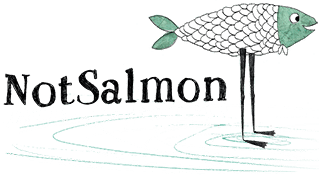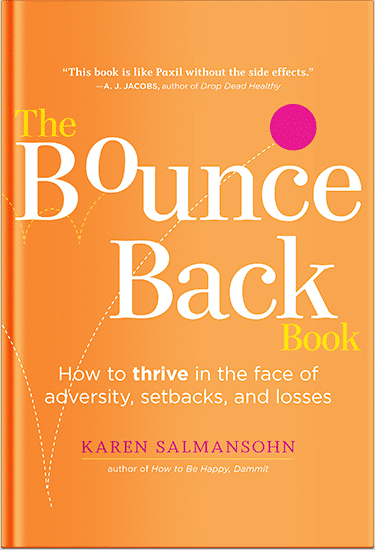 Attention-Deficit/Hyperactivity Disorder (ADHD) has traditionally been linked with stimulant drugs such as Adderall or Ritalin. However, not all treatment depends on stimulants. Non-stimulant drugs provide a different option, primarily for individuals who might not be able to tolerate stimulants or who have a history of drug or alcohol issues.
Attention-Deficit/Hyperactivity Disorder (ADHD) has traditionally been linked with stimulant drugs such as Adderall or Ritalin. However, not all treatment depends on stimulants. Non-stimulant drugs provide a different option, primarily for individuals who might not be able to tolerate stimulants or who have a history of drug or alcohol issues.
This article discusses non-stimulant drugs and their mechanism of action, benefits, drawbacks, and what type of person could be a good candidate for this treatment option.
Why Select Non-Stimulant Medications for ADHD
Stimulant drugs remain the first-line treatment options for ADHD because they act rapidly and work well. However, they’re not for everybody. Some will experience unwanted side effects such as insomnia, increased blood pressure, or loss of appetite. Others face an increased risk of being misused or dependent on them, particularly individuals who have a personal or family history of stimulant addiction.
Non-stimulant medications present a safer option for these individuals. They act differently in the brain, do not share the same level of drug abuse potential, and tend to be used when stimulants fail or are not well tolerated. Although they take longer to be effective, non-stimulants can provide significant symptom relief in the long term and with less risk of addiction.
The Mechanism Behind Non-Stimulants
Non-stimulant medications for ADHD act on a different neurological mechanism than stimulants. Rather than quickly increasing dopamine and norepinephrine levels, they modulate the activity of neurotransmitters gradually.
Atomoxetine (marketed as Strattera) is a very popular non-stimulant used most often. It acts as a specific reuptake inhibitor of norepinephrine (NRI) and increases the levels of available norepinephrine in the brain. It improves concentration, minimizes impulsivity, and controls hyperactivity, the primary deficits of people who suffer from ADHD.
Another class consists of drugs such as guanfacine (Intuniv) and clonidine (Kapvay), which belong to the class of alpha-2 adrenergic agonists. These were initially developed as antihypertensives but work on brain receptors that produce effects on attention and emotional regulation. They are very useful in decreasing hyperactivity and impulsive behavior, and tend to be preferred for children who also experience difficulties sleeping.
Because non-stimulants are not scheduled as controlled substances, they carry less risk for misuse and tend to be less challenging from a prescribing perspective.
Who Are Non-Stimulants Best For?
Non-stimulant drugs are usually recommended for those who fail to respond to stimulants or who cannot take them in a safe manner. As an example, substance abusers tend to be helped through the use of non-stimulants since they present a smaller risk of dependency.
These drugs work well even for individuals who have conditions in addition to their ADHD. Stimulants worsen conditions such as anxiety disorders and high blood pressure, as well as tics. Non-stimulants will not be as likely to worsen any of these conditions and will offer a more balanced type of treatment.
Children who suffer from notable side effects when on stimulants, e.g., emotional changes, loss of appetite, or sleep disturbances, will also find non-stimulants a better option for them. In certain adults, stimulants will not offer reliable relief from symptoms, and thus, a change would be made to non-stimulant drugs.
Ultimately, treatment must always be tailored and overseen by a physician since drug action may differ greatly from one person to another.
Onset and Efficacy: What Can I Expect?
Unlike stimulants that work as quickly as an hour, non-stimulants tend to take longer to yield noticeable effects. Atomoxetine would take several weeks, usually four or six, before achieving full effect.
This protracted onset can be aggravating for those who desire immediate relief from symptoms. A gradual development of improvement may lead, however, to a steadier mood and less variability in attention and behavior. Some practitioners will utilize a dual approach and prescribe both non-stimulants and low-dose stimulants in order to maximize benefits and minimize side effects.
They may not be as directly beneficial as stimulants, but non-stimulants also produce significant attentional, emotional, and daily functioning improvements, notably when combined with behavior therapy and routine schedules.
Safety, Side Effects, and Considerations
Non-stimulant drugs for ADHD tend to be tolerated well, although side effects may arise. Patients may experience nausea, dryness of the mouth, tiredness, or loss of appetite when taking atomoxetine. Mood swings or irritability may also arise in some individuals, although generally less so and less intensely compared to stimulant exposure.
Alpha-2 agonistic drugs such as guanfacine and clonidine can cause drowsiness, dizziness, or a reduction in blood pressure. These side effects tend to be stronger when treatment commences, but diminish as the body adapts. Because they tend to be sedating, they are sometimes taken in the evening to facilitate sleeping. Most importantly, these drugs must not be discontinued abruptly, especially alpha-2 agonists, since cessation can result in withdrawal-like effects or sudden spikes in blood pressure. Gradual tapering on the part of a healthcare provider allows for a smoother transition if drug changes must be made.
Conclusion
Non-stimulant medications offer a vital alternative for those who cannot or do not wish to take stimulants. Because they produce a slower, more controlled effect without as much risk of misuse, they are a critical part of a well-rounded treatment approach for ADHD. Non-stimulants offer a safer, long-term solution for those with a history of addiction or those who must treat ADHD concurrently with other medical or behavioral issues.
P.S. Before you zip off to your next Internet pit stop, check out these 2 game changers below - that could dramatically upscale your life.
1. Check Out My Book On Enjoying A Well-Lived Life: It’s called "Your To Die For Life: How to Maximize Joy and Minimize Regret Before Your Time Runs Out." Think of it as your life’s manual to cranking up the volume on joy, meaning, and connection. Learn more here.
2. Life Review Therapy - What if you could get a clear picture of where you are versus where you want to be, and find out exactly why you’re not there yet? That’s what Life Review Therapy is all about.. If you’re serious about transforming your life, let’s talk. Learn more HERE.
Think happier. Think calmer.
Think about subscribing for free weekly tools here.
No SPAM, ever! Read the Privacy Policy for more information.
One last step!
Please go to your inbox and click the confirmation link we just emailed you so you can start to get your free weekly NotSalmon Happiness Tools! Plus, you’ll immediately receive a chunklette of Karen’s bestselling Bounce Back Book!


 Attention-Deficit/Hyperactivity Disorder (ADHD) has traditionally been linked with stimulant drugs such as Adderall or Ritalin. However, not all treatment depends on stimulants. Non-stimulant drugs provide a different option, primarily for individuals who might not be able to tolerate stimulants or who have a history of drug or alcohol issues.
Attention-Deficit/Hyperactivity Disorder (ADHD) has traditionally been linked with stimulant drugs such as Adderall or Ritalin. However, not all treatment depends on stimulants. Non-stimulant drugs provide a different option, primarily for individuals who might not be able to tolerate stimulants or who have a history of drug or alcohol issues.